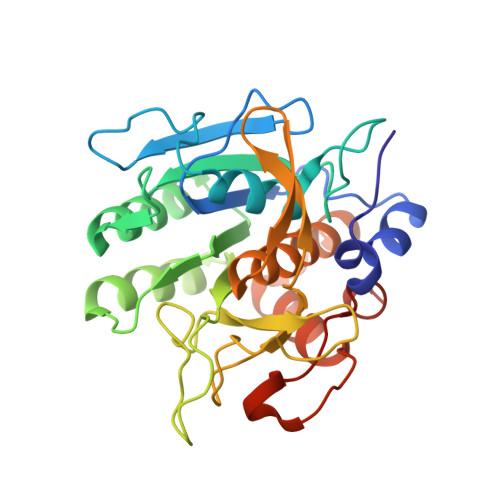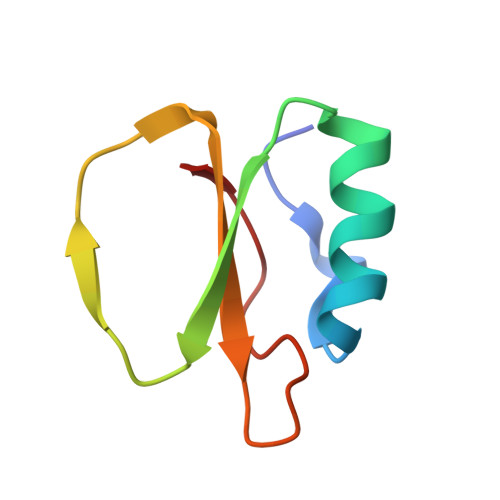Role of the intramolecular hydrogen bond network in the inhibitory power of chymotrypsin inhibitor 2
Radisky, E.S., Lu, C.J., Kwan, G., Koshland Jr., D.E.(2005) Biochemistry 44: 6823-6830
- PubMed: 15865427
- DOI: https://doi.org/10.1021/bi047301w
- Primary Citation of Related Structures:
1Y1K, 1Y33, 1Y34, 1Y3B, 1Y3C, 1Y3D, 1Y3F, 1Y48, 1Y4A, 1Y4D - PubMed Abstract:
A series of mutants of chymotrypsin inhibitor 2 (CI2), at residues involved in intramolecular interactions that shape and constrain the binding loop, were studied to determine their relative importance for inhibition of the serine protease subtilisin BPN', and for resistance of the inhibitor to proteolysis. These functional properties were investigated in tandem with the crystal structures of the mutant inhibitor-enzyme complexes. A dense hydrogen bonding network that supports the binding loop in the vicinity of the scissile bond was found to be important both for enzyme affinity and for stability to proteolysis. Structural analysis, in combination with biochemical measurements, allows differentiation of the structural components most important for resistance to proteolysis and/or binding. The most critical participating residues in the network were found to be Thr-58, Glu-60, Arg-65, and Gly-83. Glu-60 is more important for resistance to proteolysis than for binding, while Arg-65 and two other Arg residues play a greater role in binding than in resistance to proteolysis. Structural comparisons reveal a wide variety of subtle conformational changes in response to mutation, with built-in robustness in the hydrogen bond network, such that loss of one contact is compensated by other new contacts.
Organizational Affiliation:
Department of Molecular and Cell Biology, University of California, Berkeley, California 94720, USA.



















